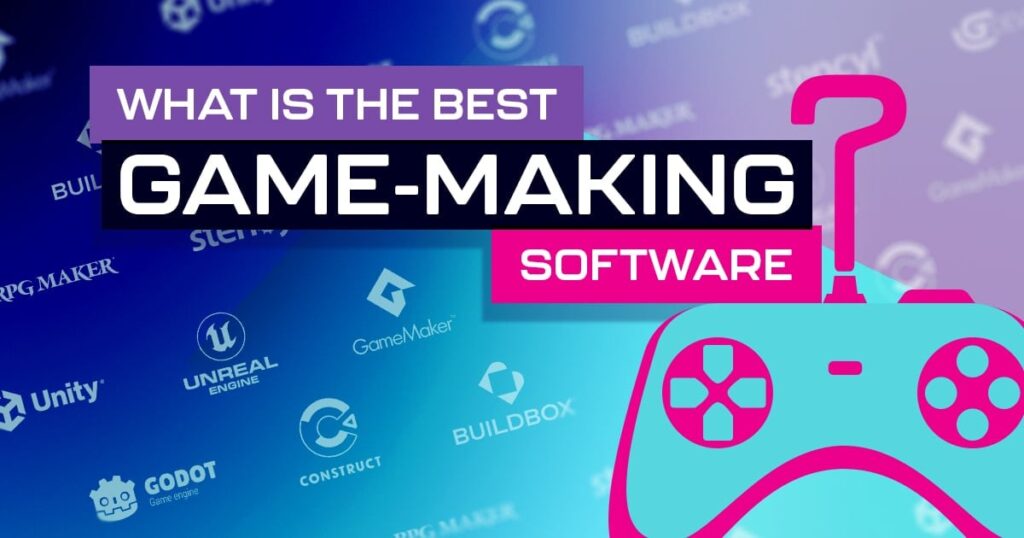GameMaker, a game development software engine created in 1999 by Mark Overmars, has become popular among indie game developers due to its ease of use and flexible capabilities. The user interface is user-friendly and easy to navigate, with a workspace for game creation and design, and a resource tree for storage and retrieval of game assets. GameMaker Language is an easy-to-learn high-level programming language that includes built-in functions and features for easier game development. The asset import capability includes a built-in sprite editor and sound editor, and a physics engine, motion options, collision detection and efficient export processes also aid the game development process.
Behind the Scenes of GameMaker: An Insight into the Software Engine for Indie Game Developers
Game development has come a long way over the years. From the simple games of the past to the complex and intricate games of today, the industry has grown tremendously. Game development engines have made it possible for game developers of all levels to create their own games from scratch. One such engine that has gained popularity among indie game developers is GameMaker. In this article, we will take a closer look at what goes on behind the scenes of GameMaker and how it makes game development accessible to indie game developers.
Introduction to GameMaker
GameMaker is a game development software engine that was first created in 1999 by Mark Overmars. The engine was initially designed to allow novice programmers to create their own games without having to learn complex coding languages. Soon after the release, GameMaker gained popularity among indie game developers, and in 2007, YoYo Games acquired the engine and has since continued to develop it.
User Interface
The user interface of GameMaker is designed to be user-friendly and easy to navigate. The interface is divided into several sections, including the main workspace, the resource tree, and the object properties. The workspace is where developers can create and design the game using drag and drop tools. The resource tree is where all the game assets are stored, including sprites, sounds, and backgrounds. The object properties section is where developers can set the properties of the game objects, including movement, collisions, and behaviors.
Coding Language
GameMaker uses its own scripting language called GameMaker Language (GML). GML is a high-level programming language that is similar to C++. However, GML is designed to be easy to learn and use for novice programmers. The language includes many built-in functions and features that make game development easier and more intuitive. Despite being a high-level language, GML is also powerful enough to handle complex game mechanics.
Game Assets
GameMaker allows developers to import a variety of game assets, including sprites, sounds, backgrounds, and scripts. The engine also includes a built-in sprite editor that allows developers to create their own custom sprites. The sound editor is also intuitive and user-friendly, allowing developers to create and edit sound effects and music for their games. GameMaker also includes a built-in room editor, which allows developers to design game levels and environments.
Game Mechanics
GameMaker includes many built-in features that make game development easier and more efficient. For example, the engine includes a physics engine that allows developers to add realistic physics to their games. GameMaker also includes a built-in collision system that makes it easy to detect collisions between game objects. The engine includes a variety of movement options, including platformer movement, top-down movement, and side-scrolling movement.
Exporting and Publishing
Once the game development process is complete, developers can export their games in several formats, including Windows, Mac, iOS, Android, and HTML5. The export process is optimized to ensure that the game runs smoothly and efficiently on the target platform. GameMaker also includes built-in publishing tools that allow developers to publish their games to popular game marketplaces, including Steam, the App Store, and Google Play.
Conclusion
Game development is a complex and intricate process that requires a lot of time, effort, and technical know-how. GameMaker has made game development accessible to indie game developers by providing an intuitive user interface, an easy-to-learn scripting language, and a variety of built-in features that make game development easier and more efficient. As game development engines like GameMaker continue to evolve and improve, we can expect to see even more innovative and creative games from indie game developers.
